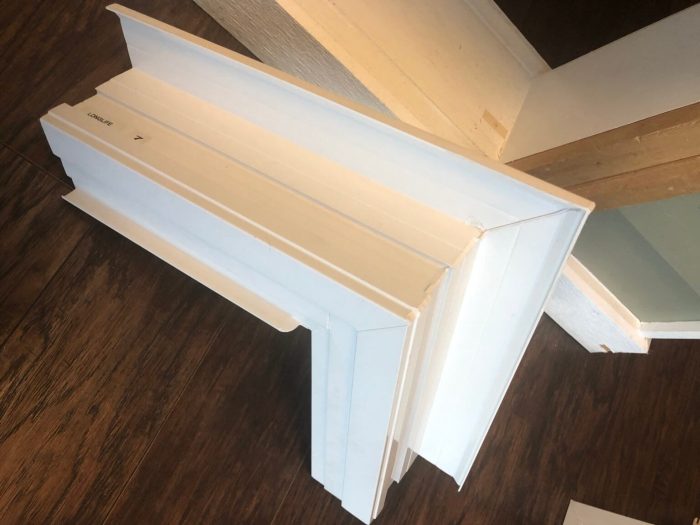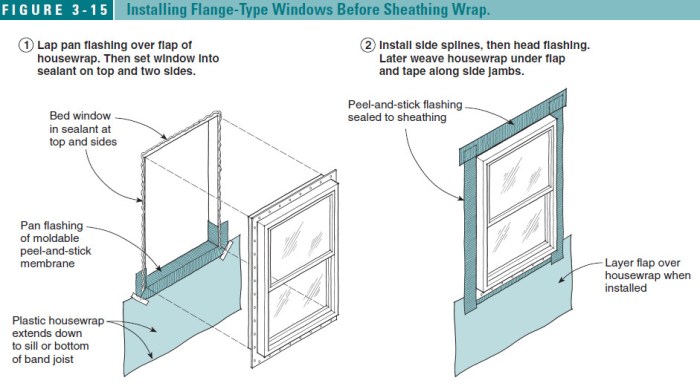Nailing flanges are not found on the outside of structures or components, a crucial fact that underscores their fundamental role in construction. These specialized flanges, typically located on the inside, serve a critical purpose in enhancing structural integrity and facilitating efficient construction methods.
Their placement within structures ensures optimal performance and longevity, highlighting the importance of understanding their function and applications.
Nailing Flanges Defined
Nailing flanges are structural components that enhance the stability and integrity of various structures and components. They are typically made of metal, such as steel or aluminum, and feature a flat, perforated surface that allows for the secure attachment of nails or screws.
Nailing flanges are commonly used in the construction industry, particularly in framing and roofing applications.
Nailing Flanges Location

Contrary to popular belief, nailing flanges are not typically located on the outside of structures or components. Instead, they are usually situated on the inside, concealed within the structure’s framework. This strategic placement ensures that the flange is protected from external elements, such as moisture and debris, which can compromise its structural integrity.
Nailing Flange Applications

Nailing flanges find application in a wide range of construction projects. They are particularly beneficial in situations where strong and secure connections are required. Some common applications include:
Framing
Nailing flanges are used to connect framing members, such as studs and joists, to create a stable and robust framework for walls, floors, and roofs.
Roofing
Nailing flanges are used to secure roofing materials, such as shingles and metal panels, to the underlying roof structure. This ensures that the roof is weathertight and can withstand wind uplift.
Other applications
Nailing flanges can also be used in various other applications, such as securing ductwork, plumbing fixtures, and electrical components.
Nailing Flange Design Considerations

The design of nailing flanges is influenced by several factors, including:
Flange thickness
The thickness of the flange determines its load-bearing capacity. Thicker flanges are stronger and can withstand higher loads.
Flange length
The length of the flange determines the number of nails or screws that can be used to secure it. Longer flanges allow for more fasteners, resulting in a stronger connection.
Flange spacing
The spacing between the flanges determines the overall strength and stability of the structure. Closely spaced flanges provide better support and prevent the structure from sagging or buckling.
Nailing Flange Installation Techniques: Nailing Flanges Are Not Found On The Outside Of
Proper installation of nailing flanges is crucial for ensuring their structural integrity. The following steps should be followed:
Accurate placement
Nailing flanges should be placed at the correct locations according to the design specifications.
Secure fastening
Nailing flanges should be securely fastened to the underlying structure using the appropriate nails or screws. The fasteners should be driven in straight and flush with the flange surface.
Avoid overtightening
Overtightening the fasteners can damage the flange or the underlying structure.
Nailing Flange Inspection and Maintenance
Regular inspection and maintenance of nailing flanges are essential to ensure their continued performance and prevent potential failures. Inspections should be conducted periodically to identify any signs of damage or corrosion. Damaged or corroded flanges should be repaired or replaced promptly to maintain the structural integrity of the building.
General Inquiries
Why are nailing flanges not found on the outside of structures?
Nailing flanges are typically located on the inside of structures to protect them from external elements such as moisture and corrosion, ensuring their longevity and structural integrity.
What are the consequences of having nailing flanges on the outside?
Having nailing flanges on the outside can compromise the structural integrity of the building, as they may be more susceptible to damage from external forces and environmental factors.
How do nailing flanges contribute to efficient construction methods?
Nailing flanges simplify the construction process by providing a secure and convenient way to attach structural components, reducing construction time and labor costs.